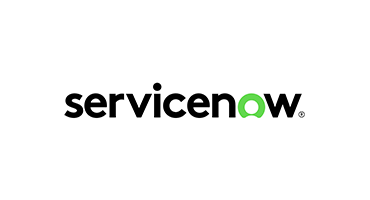HR leaders at Dropbox, the San Francisco-based file-hosting service that employs more than 3,000 people, were already having conversations about how to reinvent the workplace before March 2020. When the COVID-19 pandemic struck, Dropbox joined most other major companies in sending those employees home to work remotely as they adapted to new ways of connecting over computer screens.
But unlike most of their rival firms, the tech company isn’t pressing workers to return to the office now that the pandemic has run its course. Where many corporations saw a crisis in the pivot to remote during COVID, Dropbox saw an opportunity.
“One thing that became quickly clear is that we really needed to do a kind of an upgrade with work and really reinvent our day-to-day work,” says Allison Vendt, a senior director at Dropbox and global head of its Virtual First program. She says company leaders realized “we have this great opportunity to be a lab for what distributed work could look like.” Remote work was seen “as a one-way door—we were committed to it from the get-go.”
As the pandemic waned in the last year or two, organizations around the country started rolling out return-to-office mandates—but the push is not universal. Several dozen moderate-to-large companies are doubling down on remote-first policies that typically provide workers with an option to work from an office but allow them to work from home as much as they want. These trend-buckers say working mostly from home has made their current employers happier and also made it easier to recruit new talent. Apart from Dropbox, the tech-heavy list of firms touting “remote-first” includes Pinterest, Adobe, Coinbase, SAP, Shopify and Square, but also non-tech employers such as Synchrony Financial, State Farm and Verizon.
Following the data
Dropbox, which—like many of its Silicon Valley neighbors—pre-pandemic, had offered office workers perks like free gourmet food and Peloton bikes, pulled a U-turn in October 2020 by announcing the work-from-home Virtual First strategy. A few workplaces called “studios” were set up in key cities like San Francisco and Seattle. Schedules changed to give workers both flex time and overlapping hours to collaborate. Studies showed the changes made workers happier and more productive, Vendt says.
This, as many corporate CEOs and their HR departments push for their employees to come back to the office for much of the work week—even all five days in some cases. In August, a survey by the firm Resume Building found that a whopping 90% of the 1,000 companies questioned plan to implement a return-to-office policy.
Entertainment giant Disney was among them. Earlier this year, then-Disney boss Bob Iger explained the rationale for the company’s four-day, in-office RTO policy in a memo: “In a creative business like ours, nothing can replace the ability to connect, observe and create with peers that comes from being physically together, nor the opportunity to grow professionally by learning from leaders and mentors.”
Yet, workers have said overwhelmingly in survey after survey that they prefer a hybrid policy that allows them to work from home at least some of the time. What’s more, some studies seem to confirm what work-from-home advocates have been arguing the last three years: The inherent benefits of remote work—such as the ability to time-shift and the hours saved by not commuting—have actually increased worker productivity.
For instance, an October 2023 study of 1,000 remote workers by the firm Ergotron found that 40% of them worked longer hours from home than from the office, even as they also reported less stress and greater work/life balance. And yet, a remote-work-first policy still makes some corner-office execs uneasy—fearing decreased collaboration and distrusting that home workers use their time wisely.
New strategies for engagement, culture

Although the financial sector was perhaps the most vocal in calling its workers back to the office, Synchrony Financial—the Stamford, Conn.-based financial-services firm formerly known as GE Capital—announced a remote-first policy for its 16,500 employees in November 2020 and hasn’t looked back.
“When the pandemic started, we all thought we were going home for two weeks and then coming back,” says Rebekah Raimo, Synchrony’s senior vice president of human resources. “When that didn’t happen, one of the things that Synchrony does really well is listen to its employees.”
It wasn’t just that Synchrony’s employees preferred working from home and having some extra hours to spend with family or on their hobbies. The company also quickly found that the new routines of online meetings were actually more productive, with a livelier give-and-take and more workers speaking up—a true upgrade from the tepid, PowerPoint meetings that occurred before the pandemic. The firm’s success in adding major new clients like Venmo and Verizon in the early days of the pandemic convinced its leaders that remote work is the future.
Raimo says people managers at Synchrony have played a key role in finding ways for the workforce to stay engaged while not in the office. That meant a switch to more continuous coaching of employees instead of scheduled evaluations, she explains, as well as training team leaders to develop a more personalized style in supervising these mostly remote workers.
When employees do come to the Connecticut main office, they’ll find what Raimo calls “a culture center” with walking trails, fire pits, and bocce and pickleball courts to foster collaborative interactions. “It’s not like at home, sitting at a desk,” she explains. “We rethought a lot so it’s not a traditional workday.”
Finding a healthy balance
At Pinterest, the photo-oriented social media site headquartered in San Francisco with 3,500 employees, HR officials said they found in the early days of the pandemic that working from home gave its staffers a sense of empowerment they wanted to build upon.

“The program is a direct response to what we heard from employees,” says Christine Deputy, Pinterest’s chief people officer, in describing the remote-work program the company now promotes as PinFlex. “Employees are seeking flexibility and our employees remain productive, inspired and connected—no matter where they join from each day.” She says the company’s finding that Pinterest employees are happier with the work/life balance afforded by a remote-first setup aligns with the U.S. Surgeon General’s 2022 call for a healthier workplace.
Like other remote-first companies, Pinterest has developed a system of logistical support for workers based mostly at home, including subsidies for upgrading home computers or Wi-Fi as well as travel expenses when far-flung workers must come into an office. The tech company expects employees to do that at least once a year—but only with a purpose, such as a special event like the firm’s annual two-day festival called Knit Con.
With its roots in perhaps America’s most expensive city of San Francisco, Pinterest has joined other remote-first companies in finding that the freedom to live anywhere in the 50 states and possibly abroad has been a boon to recruiting, especially for building a more diverse workforce. Says Deputy: “Employees are supportive of the program because choosing where to work empowers them; they have the autonomy to make decisions that best support their working styles.”
But what about those CEO fears about lack of collaboration? At Dropbox, Vendt says, there’s a constant effort to balance the desire for flex time with the need for collaboration, including four-hour time blocks when everybody in a department—regardless of their time zone—is on the clock. Leadership is also working to balance working from home with in-person opportunities because, as Vendt says, “folks are hungry for human connection, and also some of the spontaneity.”
That said, it’s hard for Dropbox to argue with surveys showing 93% of employees have a better sense of wellbeing working from home, and some 81% feel they are now more productive. “Our employees are responding really positively to this,” says Vendt, adding that, right now, there’s no intention of going back through that one-way door.
Credit: Source link











